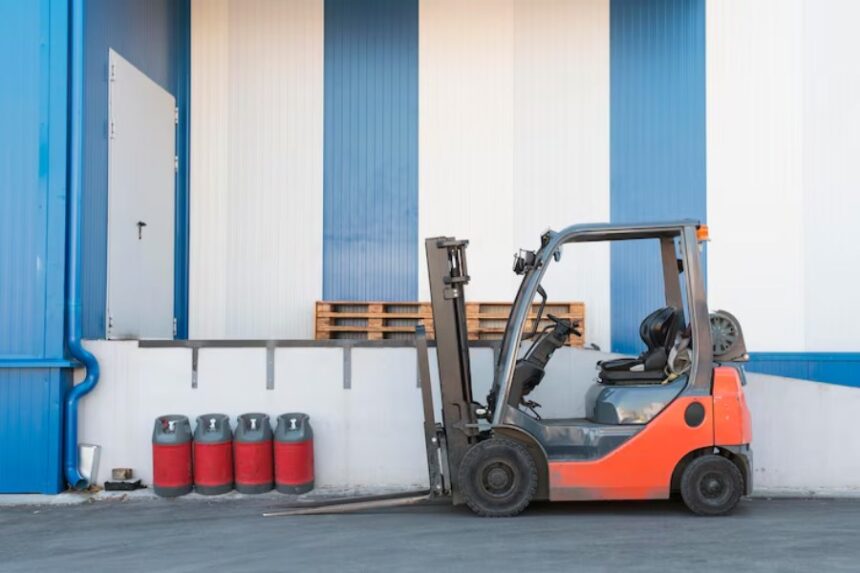In the world of construction, time is money, and so is equipment. Forklifts are essential for moving heavy materials efficiently across job sites, especially when dealing with pallets of bricks, bundles of lumber, or steel beams. But not every project or company can justify the cost of a brand-new forklift. That’s where used forklifts come into play.
Buying used forklifts for sale can save thousands of dollars, but it’s not without risks. You need to know what to look for to ensure you’re investing in a machine that’s safe, reliable, and capable of handling your construction needs. Here’s a comprehensive guide to help you navigate the process.
Understand Your Requirements
Before you start browsing listings, define what you need from a forklift. Ask yourself:
- What type of terrain will the forklift operate on?
- What is the maximum weight it needs to lift?
- How high does it need to lift?
- Will it be used indoors, outdoors, or both?
For construction sites, you’ll likely need a rough terrain forklift with pneumatic tires and a higher ground clearance. These machines are designed for uneven surfaces and can handle heavier loads, making them ideal for construction environments.
Check the Forklift’s History
Just like buying a used car, it’s crucial to review the history of a used forklift. Ask for maintenance logs, repair records, and usage hours. Generally, forklifts have a lifespan of around 10,000–15,000 hours, but a well-maintained unit can exceed that. Compare the usage hours to the age of the machine to spot any red flags.
Low hours on an older forklift could indicate periods of inactivity, which isn’t necessarily good. Machinery that sits unused can suffer from dry seals, rust, or battery degradation.
Inspect the Mast and Forks
The mast is one of the most crucial parts of a forklift. Look for:
- Cracks, bends, or welds on the mast.
- Smooth operation when lifting and lowering.
- No leaks in the hydraulic lines.
- Even wear on the forks and check that they’re not bent or chipped.
Forks that are uneven or damaged can compromise safety and handling on the job site.
Evaluate the Tires and Undercarriage
Tires tell a story. Excessive wear, deep cracks, or mismatched tires could mean the forklift has seen rough conditions. Since construction forklifts often deal with rugged terrain, ensure the tires are suitable for off-road use.
Also, examine the undercarriage for rust, oil leaks, or damage to axles and differentials. These are signs of poor maintenance or harsh use.
Test the Engine and Transmission
Run the forklift through a full cycle. Listen for unusual noises from the engine or transmission. Check for:
- Smooth gear shifting.
- Lack of hesitation or stalling.
- Clean oil and fluid levels.
- No smoke from the exhaust (especially black or blue).
A strong engine and responsive transmission are essential for a construction site where loads are often heavy and precision is key.
Consider Safety Features
Used doesn’t mean outdated. Ensure the forklift has essential safety features, including:
- Functional lights and backup alarms.
- A secure overhead guard.
- Working seat belt.
- Intact load backrest extension.
Additionally, verify that the forklift complies with current OSHA safety standards for construction use.
Buy from a Reputable Seller
Finally, always buy from a trusted dealer or a source with verifiable reviews and service records. Reputable dealers often refurbish their forklifts, provide warranties, and offer after-sales support—advantages you won’t get from a private seller on a classified site.
Final Thoughts
Used forklifts can be a smart investment for construction businesses aiming to save money without sacrificing functionality. But due diligence is key. By carefully inspecting the condition, checking service records, and aligning the machine’s capabilities with your job site needs, you can find a reliable piece of equipment that boosts productivity and safety on the job.
Whether you’re a contractor outfitting a new crew or a builder managing costs, understanding what to look for in a used forklift can make all the difference. Choose wisely, and that “used” forklift might just turn out to be one of your smartest investments yet.




